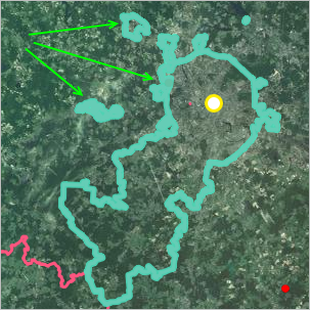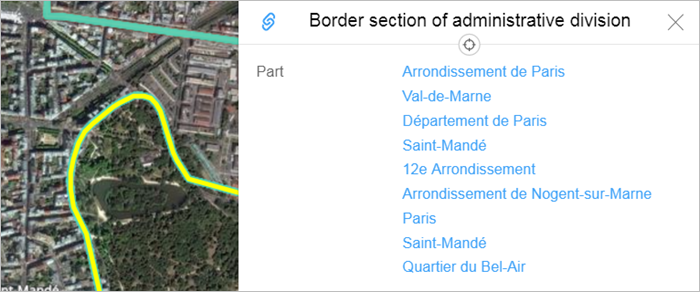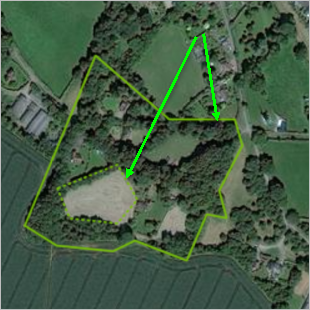2.7.4. Composite polygonal items
The following are composite polygons:
-
Items that may consist of several polygons (these are called external polygons).
For example, the city of Moscow contains several polygons (territories outlines in turquoise in the drawing) that are not contiguous:

-
Items whose borders (or parts of them) with several items of the same type.
For example, the same section of an administrative division border may also border several other divisions (regions, cities, districts, etc.):

-
Items that consist of two or more polygons, one or more of which are completely encompassed by another one (the external polygon).
For example, paths or clearings (items from the
Vegetation
category that don't belong to any of that category's types) that are located on woodland territory are represented using internal polygons (the dotted line in the drawing):
Furthermore, items that are not composite (i.e. they consist of only one polygon or don't share borders with other items) are created the same way that actual composite items are.
In this section, techniques for creating composite polygonal items are described using administrative divisions as the main example. These techniques work independently of the type of object being created.
Alert
When drawing, follow 2.7.1. General rules for drawing polygonal items.
When drawing internal polygons, follow 2.7.2. Rules for using internal polygons.
In addition to the general drawing and editing techniques for polygonal items, there are rules for drawing concrete items: administrative divisions, bodies of water, and others. These rules are found under section 3. Global mapping rules and 4. Rules for regional mapping.
Use the general drawing and editing techniques described in the following sections to draw composite polygonal items:
- 2.7.4.1. Composite polygonal items: drawing techniques
- 2.7.4.2. Complex contour object: editing techniques
Any named composite polygon must be validated for relevance and compliance with the drawing rules as an independent item, not as an attribute of the sections or polygons it consists of.